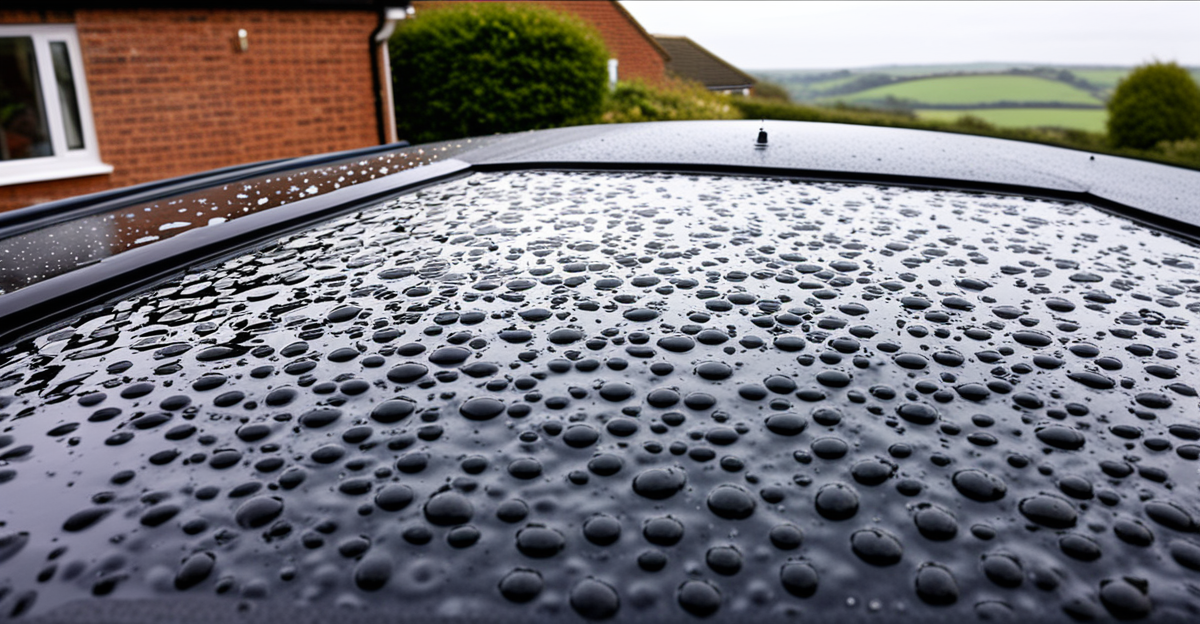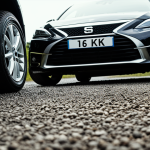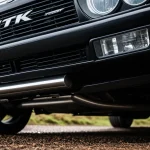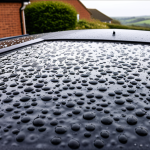Understanding the Unique Waterproofing Needs of British Convertible Roofs
British convertible roof protection faces distinct challenges primarily due to the UK weather, which is known for its frequent rain and dampness. Convertible fabric care in the UK requires more attention than in drier climates because constant exposure to moisture can degrade fabric integrity and cause leaks. Traditional waterproofing approaches may not suffice for British vehicles, necessitating tailored solutions that address the often unpredictable and persistent wet conditions.
The importance of specialized waterproofing strategies for British convertibles cannot be overstated. UK weather’s blend of rain, wind, and humidity accelerates wear and places stress on seams and seals. This makes it critical to choose materials and products designed specifically for these climatic circumstances to maintain protection and durability.
Have you seen this : Ultimate Guide to Boosting Soundproofing in Your British Family Car: Key Tips for a Quieter Ride
Inadequate sealing poses significant risks to both classic and modern canvas tops. Without proper waterproofing, fabric fibers can absorb moisture, leading to mold growth and deterioration which compromises the roof’s appearance and functionality. Modern canvas tops, while often more advanced in materials, still require consistent maintenance and protection suited to the British environment to prevent early signs of damage. Prioritizing roof protection aligned with UK weather conditions ensures longevity and preserves the vehicle’s value.
Evaluating and Preparing Your Convertible Roof for Waterproofing
Understanding the current condition of your convertible roof is an essential first step in effective British convertible roof protection. Proper roof inspection involves a detailed examination for signs of wear, damage, or contaminants such as dirt, mildew, and bird droppings. These elements can compromise the fabric’s waterproofing layer and prevent new treatments from bonding effectively.
Topic to read : Ultimate Guide to Safeguarding Your British Car’s Paint from Harmful UV Rays
Fabric assessment is crucial to determine if the material still retains its integrity or if deeper issues like fading, brittleness, or tears are present. A thorough evaluation helps decide whether simple cleaning will suffice or if professional restoration should be considered. This step prevents wasting time and effort on waterproofing products that cannot perform well on compromised fabric.
Cleaning techniques tailored for UK conditions play an important role in convertible fabric care. Use mild, pH-balanced cleaners designed specifically for convertible tops to avoid stripping protective coatings. Gently scrubbing the surface and rinsing thoroughly removes accumulated grime and prepares the fabric for waterproofing sprays or sealants. Attention to drying the roof completely before treatment is vital to prevent trapping moisture, which could worsen under the new waterproof layer.
Ultimately, regular roof inspection combined with proper convertible roof cleaning creates a solid foundation for long-lasting waterproofing. Identifying contamination or damage early enables corrective actions that preserve fabric health and enhance the effectiveness of subsequent waterproofing applications.
Choosing the Right Waterproofing and Sealing Products
Selecting appropriate waterproofing sprays is vital for effective British convertible roof protection. The UK weather demands products that offer robust resistance against consistent rain, humidity, and wind-driven moisture. Ideal waterproofing solutions feature strong water repellency and flexibility to accommodate fabric movement without cracking or peeling.
When considering sealant recommendations, opt for formulations specifically designed for convertible fabric care. These products often combine water-repellent polymers with UV protection to shield against sun damage while maintaining breathability to prevent trapped moisture underneath the fabric. Compatibility with both canvas and vinyl roofs is essential to avoid discoloration or degradation.
Safety is another critical factor in choosing compatible products. Many waterproofing sprays are non-toxic and eco-friendly, reducing risk during application and ensuring they do not harm vehicle paintwork or interior components if overspray occurs. Always test a small inconspicuous area before full application to confirm no adverse effects on the fabric’s texture or colour.
In summary, effective waterproofing for British convertibles involves choosing sprays and sealants that balance durability, flexibility, UV resistance, and safety. This tailored approach ensures long-lasting protection aligned with the UK weather’s unique challenges.
Step-by-Step Application Process for Optimal Protection
Ensuring effective British convertible roof protection hinges largely on mastering the convertible roof sealing process. Start by preparing your workspace: choose a clean, dry area sheltered from wind and direct sunlight to prevent dust contamination and premature drying of products. Gather all necessary materials, including the selected waterproofing sprays, sealants, soft brushes or sponges, microfiber cloths, and gloves.
Begin with a thorough convertible roof cleaning to remove dirt or residues that could inhibit product adhesion. After confirming the roof is completely dry, apply waterproofing sprays evenly using smooth, overlapping strokes to avoid patchiness. Pay special attention to seams and edges, as these areas are prone to water intrusion. Proper coverage here significantly enhances durability against the UK’s persistent damp conditions.
For seams and vulnerable spots, consider using additional sealant layers recommended in product usage guides. Allow each coat to dry fully before applying the next; this layering builds resilient protection without compromising fabric breathability. Applying too thickly can trap moisture, so follow instructions on quantity carefully.
To guarantee uniform protection, periodically check the roof under varying light conditions during application. This helps identify missed patches or uneven distribution early. Using a fine brush for hard-to-reach areas ensures no section is overlooked.
Ultimately, methodical attention to preparation, application technique, and drying times optimizes waterproofing results, extending the lifespan of your convertible roof while combating challenging UK weather influences effectively.
Maintaining Long-Term Waterproofing Performance
Regular roof maintenance is crucial to prolong the effectiveness of British convertible roof protection. The UK weather’s persistent moisture means that even the best waterproofing treatments degrade over time, making routine care a necessity. A consistent maintenance schedule should include inspections, gentle cleanings, and timely reapplications of waterproofing products.
How often should waterproofing sprays be reapplied? For UK conditions, experts recommend reapplying every 6 to 12 months depending on usage and exposure. Frequent rain and dampness accelerate wear on the protective barriers, so vehicles stored outside or driven daily may need more frequent treatments. Monitoring the fabric’s water repellency during rainfall tests can help signal when a fresh application is necessary.
Preventing moisture buildup is another key element in converted roof maintenance. Ensure that the roof is completely dry before closing or storing the vehicle, as trapped dampness encourages mold and fabric damage. Address minor leaks immediately to prevent water ingress from worsening. Early detection through regular inspections enables swift intervention, reducing the cost and complexity of repairs later.
In summary, diligent roof maintenance tips such as regular cleaning, scheduled waterproofing reapplication, and vigilant moisture control are essential for safeguarding British convertibles against the UK’s challenging weather. These practices not only preserve waterproofing performance but also extend the roof’s lifespan.
Expert Answers to Common Convertible Roof Care Questions
Understanding frequent concerns in convertible roof FAQs helps owners manage British convertible roof protection more confidently. One common question is: How can I stop persistent leaks despite regular waterproofing? The precise answer is that leaks often result from worn seams or compromised fabric integrity rather than surface waterproofing failures alone. Repairing or resealing seams with recommended products tailored for the UK weather provides the best solution. Ignoring structural issues leads to recurring problems despite repeated waterproofing sprays.
Another typical inquiry concerns stubborn stains: What are safe methods for removing mildew or water marks without damaging the roof? Proper convertible roof cleaning employs gentle, pH-neutral cleaners designed specifically for canvas or vinyl roofs. Aggressive chemicals can erode waterproof coatings or alter fabric colour, worsening the roof’s appearance. For persistent stains, multiple gentle applications combined with soft brushing often yield the best results. Always test in an inconspicuous spot first to avoid unexpected damage.
Regarding the choice between professional and DIY waterproofing, many wonder: Is professional application worth the cost? Expert application guarantees thorough inspection, precise fabric assessment, and use of compatible waterproofing sprays and sealants that suit the UK climate. Nevertheless, careful, informed DIY application following detailed product usage guides can work effectively for routine maintenance. The key is understanding your roof’s condition and selecting products optimized for British weather challenges to ensure optimal protection.
In summary, addressing convertible roof FAQs with expert insight empowers owners to troubleshoot issues effectively. Prioritizing seam integrity, gentle cleaning, and informed product choices bridges the gap between recurring problems and reliable, long-lasting waterproofing in the UK environment.









